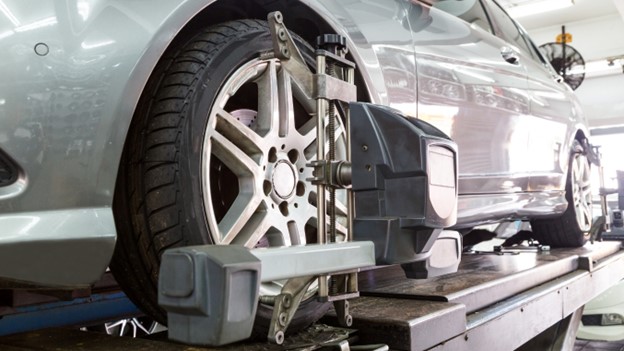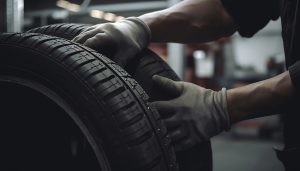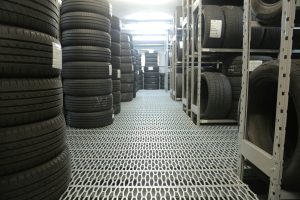When installing new tyres or rims, mechanics usually recommend balancing and aligning your car’s wheels. Some say wheel alignment is mandatory, while others argue that it is not important.
Common questions from car owners include whether tyres need balancing and alignment. Is this just a trick by tyre businesses to make a profit? Before we draw conclusions, let’s first understand the purpose and importance of balancing and aligning tyres.
What does tyre balancing mean?
Have you ever seen a mechanic place a car tyre on a machine and apply pressure to it? That is the act of balancing. Weights are used to balance the overall weight distribution of the tyre, ensuring a smooth and consistent rotation.
What does tyre alignment mean?
Tyre alignment refers to the adjustment of a car’s suspension. More precisely, it is a connecting system that links the vehicle’s steering to its tyres, allowing the tyres to turn.
The key to the proper alignment process is adjusting the tyre angles to have a better effect when the tyres come into contact with the road surface.
Therefore, this tyre alignment process is an essential periodic maintenance that should not be overlooked. Additionally, choosing the right tyres for your car is important too.
Tyre alignment involves adjusting and/or maintaining three main aspects of how your tyres works on the road:
- Camber: This is the inner or outer angle of the tyre when viewed from the front of the vehicle. Excessive inward (negative) or outward (positive) tilt indicates incorrect alignment and needs adjustment. Worn or damaged bushings, bearings, or ball joints can also affect camber settings.
- Toe: Toe refers to how much the car’s tyres turn inward or outward when viewed from above. Toe is divided into Toe In (tyres turned inward) and Toe Out (tyres turned outward).
- Caster: Caster refers to the angle of your steering axis when viewed from the side of your vehicle. If you have positive caster, the steering axis will tilt towards the driver. Conversely, negative caster means the steering axis tilts towards the front of your vehicle.
Why should you perform wheel balancing and alignment?
Why does the car’s steering wheel shake severely at high speeds? This could be due to your tyre balancing being off. When tyre balancing is compromised, your car tyres do not rotate evenly. This can cause discomfort and make you anxious while driving.
One sign that your car needs tyre alignment is when it veers off its path (on the road) even though your steering is straight. Another way to determine whether tyre alignment is necessary is when your steering feels unbalanced or not straight while driving on a straight road.
Wheel balancing and alignment are also essential to maintain the evenness of your tyre surfaces. If wheel balancing and alignment are not perfect, tyre wear will be uneven and can shorten the lifespan of all four of your car tyres.
What causes wheel balancing and alignment to deteriorate quickly?
One cause of wheel balancing and alignment damage is when you hit a pothole on the road with force, causing a significant impact on the entire car.
Therefore, even if you have tried your best to avoid potholes while driving, your car’s stability will gradually be affected throughout its lifespan.
If while you are driving, you notice your steering wheel vibrating intensely throughout the journey, causing a disturbance in your driving, that is one reason your wheel balancing may be problematic.
So, you need to perform wheel balancing as soon as possible to ensure perfect tyre balancing. However, tyre balancing may also fail if your tyre rims are bent. Therefore, you need to replace the rim, and then the tyre balancing will be successful.
When should you perform wheel balancing and tyre alignment?
Wheel balancing and alignment are usually done together. The recommended interval for tyre checks is every 10,000 km. However, if you feel excessive steering wheel vibration when driving slightly fast or your car does not move straight, it is advisable to have this check done as soon as possible.
One of the benefits of good wheel balancing and alignment is your driving will be more comfortable and in a good condition. Most importantly, excessive tyre wear can also be avoided.
If you are a professional driver, you should take extra precautions and frequently ensure that your car’s wheel balancing and alignment are always in perfect condition.
Even if you are an ordinary driver, you still need to regularly check every 10,000 km.
What happens if you neglect wheel alignment services?
Car tyres are not just black donuts made of rubber and placed on rims. On the contrary, various advances, engineering, and tests have been conducted in tyre production, and they function well as solid vehicle components if well-maintained.
In short, the happier your tyres are, the safer you are.
Incorrect wheel alignment angles can cause your tyres to wear and damage unevenly, reducing tyre and car performance.
In other words, your car will not stop, move, and turn as it should.
In summary, uneven alignment can cause many other problems that can affect other parts of the tyre. Improper camber settings can cause uneven wear on the outer or inner tyre surface. Incorrect toe angle can cause scrubbing or feathering on the tyre surface. In most cases (more than one), improper alignment settings can cause the car to veer either to the left or right, causes danger.
Current prices for wheel alignment and balancing
The estimated cost for wheel alignment is between RM 20 – 25 and above per tyre. The current price for wheel balancing is usually slightly cheaper than alignment, around RM 10 – 15 and above per tyre. The prices for wheel alignment and balancing usually depend on the size of your car tyres.
The cost of wheel alignment and balancing is usually combined into one promotional price if both are done at the same workshop. Therefore, don’t forget to check whether the prices are separate or not. Depending on the area, sometimes the cost of wheel alignment and the cost of wheel balancing will be slightly lower.
Tayaria Wheel Alignment and Balancing Costs: Latest Updates for 2024
Alignment Cost | Toe in/toe out for every car | RM 35 – 65 |
Balancing Cost | Normal Balance | RM 8 – 10 |
RFM for High-Speed Balancing | RM20 – 25 |
In conclusion
By consistently maintaining proper wheel balancing and tyre alignment, drivers can ensure optimal vehicle performance, long tyre life, fuel efficiency, and improve safety on the road.
It is a simple but crucial maintenance step that should not be ignored. To get quality tyre service, visit our car tyre shop today.





